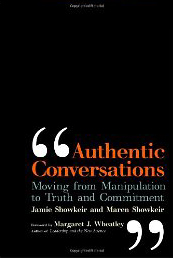A recent, exceedingly frustrating shopping experience underscores our conviction that the employees with the most customer contact need the knowledge, resources and decision-making authority to make decisions that serve the business. If they don't have them, we guarantee it is having a negative effect on quality, profitability, cycle time and unique response.
We originally wrote a detailed account of our ordeal, but it was so tedious and mind-numbing that we deleted it. The details aren’t as important as the fact that most people have similar experiences all the time.
Here are highlights:
We ordered a coffeemaker using American Express points in late November. We selected Home Depot from among three vendors offered on the AmEx site because it was a well-known national brand.
Home Depot sent us the wrong coffeepot twice, and we shipped it back — twice.
Over the next few weeks, we spent nearly seven hours with Home Depot call center employees and/or their supervisors trying to get the right coffeemaker delivered. At times we were left on hold for up to 20 minutes.
Eventually, Maren discovered a discrepancy between the model number on the American Express site and Home Depot’s: it was off by one letter.
The coffeepot we wanted was actually $99.99, but because of that discrepancy, twice we’d been sent one that sold for $59.99.
We got American Express involved, and on the first phone call, the customer service rep told us that since we had shipped the second coffee pot back, she would restore our points and we could start over.
In the meantime, a second-level supervisor called us back and after we repeated our saga for the umpteenth time, she said she would send us the coffeepot we wanted – at no charge to us – and ship it express. It took six weeks to satisfy our order even though the product was in stock.
By our calculations, a $40 mistake that could have been quickly resolved with one phone call ended up costing Home Depot:
- Shipping costs for three regular deliveries and one express delivery
- More than six hours of employee time (minimum of $100 based on online salary estimators.)
- $99 for coffee pot we were finally sent at no charge.
- Additional time for the employees working in the warehouse, accounting and other related departments.
- Opportunity costs -- employees dealing with us could not be serving other customers, which increased wait time in the system.
- Serious erosion of customer loyalty and goodwill
Home Depot spent at least $500 – for a $40 mistake.This was just one experience. Imaging this scenario being repeated thousands of times a day to varying degrees!
We worked with one client, for instance, that had four call centers with about 1,500 employees at each center. Assume each of the 6,000 employees handle an average of at least 100 calls a day – that means 60,000 frontline customer contacts every day.
Do that math for a year. That is 15.6 million customer contacts! How much influence do you think they have on the customer experience?
Even if only two or three percent of the phone calls were as costly as ours (some would be more, some would be less), that would be a huge hit to the bottom line. Not to mention that customers who weren’t as persistent as we were in getting our problem resolved (or as knowledgeable about how call centers work), might give up in frustration, creating permanent dissatisfaction.
And yet call center employees, the people who deal with thousands of customers a week, are usually treated like children who can’t be trusted to do the right thing.
These employees typically earn low wages, are given strict protocols to follow, have no decision-making authority and lack a clear understanding of how what they do contributes to business success. We have been in call centers where employees are required to ask permission to use the bathroom! No wonder call centers are characterized by very high employee turnover.
Imagine if front-line employees had the same knowledge and decision-making authority as second-level supervisors, and understood how what they did contributed to the success of the whole. They could grant exceptions to satisfy a customer on the first phone call, in a few minutes.
Do they have to understand the difference between fixing a $40 mistake and a $500 mistake? Of course. Will there be people who mess up? Of course. But doesn’t it make more sense to create policies for the 95 percent of employees who show up everyday wanting to do a good job, instead the 5 percent who can’t be trusted? Deal with issues of accountability as they occur and treat mistakes as a learning experiences.


 maren
maren